


"Frank Mannheimer (1896 – 1972) was an American pianist and teacher. Born in Dayton, Ohio, he studied with various teachers there before he entered the Chicago Musical College in 1913, where three years later he received the Bachelor of Music degree. During World War I he served in the U. S. Army Signal Corps, returning to Ohio after his discharge in 1919, where he taught and pursued a modest concert career. By 1924 he was in Berlin studying with Leonid Kreutzer (1884-1953), a pupil of Anna Yesipova, and he also attended Schnabel’s master classes. But he was unhappy with his studies in Germany, and in 1926 he settled in London, where he began extensive work with Tobias Matthay, who added him to his staff in 1927. He remained under Matthay’s influence for over a decade, residing in London until the second War forced him home. Well respected as a teacher and performer, he became an advocate for contemporary American music, performing works by Roger Sessions and Leo Sowerby. On October 25, 1936, the BBC broadcast his performance of Chopin’s early C minor Sonata played on the Broadwood used by the composer during his final visit to London in 1847. In the 1930s, Mannheimer also gave summer classes in the United States, first in Chicago, and then at Cornell College in Iowa, which enhanced his American following. During World War II, he taught at Michigan State University, but in the early 1950s, he developed a tremor in his hands that was said to be hereditary, forcing him to abandon his concert career. He devoted the rest of his life to teaching, dividing the months from September through May between London, Vienna, and California. From 1940 until 1971, his summers were spent in Duluth, Minnesota, where he gave lecture recitals and master classes. Generally praised as a highly analytical and inspiring teacher, he coached and trained many prominent American pianists and teachers. His friend Alfred Brendel recalled that he was 'a civilized personality full of kindness.' He coached and trained many prominent American pianists, including the renowned pianist and teacher, John Perry."


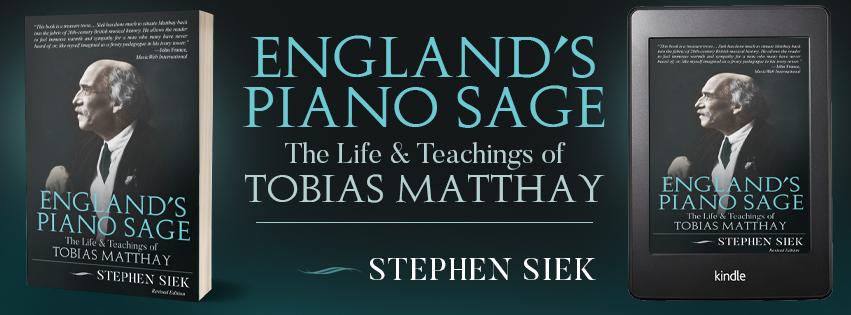
Now at long last, a new, revised edition of England's Piano Sage: The Life and Teachings of Tobias Matthay, Stephen Siek's highly acclaimed biography of Matthay first published in 2012, has been made available in both trade paperback and e-book formats under
the imprint of the H. W. Marston Press. This revised edition includes an annotated, highly detailed discography chronicling over 50 of the CDs of Matthay and his pupils that have been released since the book's first publication in 2012, and—through the courtesy of APR and Eloquence Records—URLs linking to complete PDFs of the accompanying booklets with photos. Now for the first time, England's Piano Sage is available at a price easily accessible to students and teachers, and the Amazon link may be found simply by clicking on the image above.
You can read more about this important new release here.
Mme Genhart, who was born Cécile Staub in Basel, Switzerland, was from an intensely musical family, and her father was intimate with some of the greatest musicians of the day—including Max Reger, Fritz Kreisler, Albert Schweitzer, and Walter Gieseking—all of whom were welcome guests in their home. She was, quite literally, born into the "Golden Age" of pianism, and during World War I, she played for both Ferruccio Busoni and Eugen d'Albert in Zurich, later studying intensively with Emil Frey, a student of Rudolf Breithaupt. She made her European debut in Zurich in November of 1920, before relocating to Munich to attend the master classes of Josef Pembauer, eventually reaching Berlin in October of 1921, where she became close to Edwin Fischer and his wife. But though she revered Pembauer and Fischer for their musical insights, she felt profoundly disappointed that neither offered any guidance to explain how their effects were achieved at the instrument. In December of 1922, she made her Berlin Philharmonic debut to a packed house under its concertmaster, Otto Marienhagen—deputized to stand in for an ailing Fischer—performing both the Beethoven First and the Brahms Second, and the reviews were marvelous.
After she married pianist and conductor Herman Genhart, they arrived in Rochester, New York, in 1924, and two years later, she joined the faculty of the Eastman School of Music,
where she served for decades as one of its preeminent teachers. She began studying with Tobias Matthay in 1929, and in her words,"He was the greatest teacher I had ever known. ... If one of the
criteria of a great teacher is the ability to make every one of his students play beautifully, then surely Tobias Matthay is master of us all."

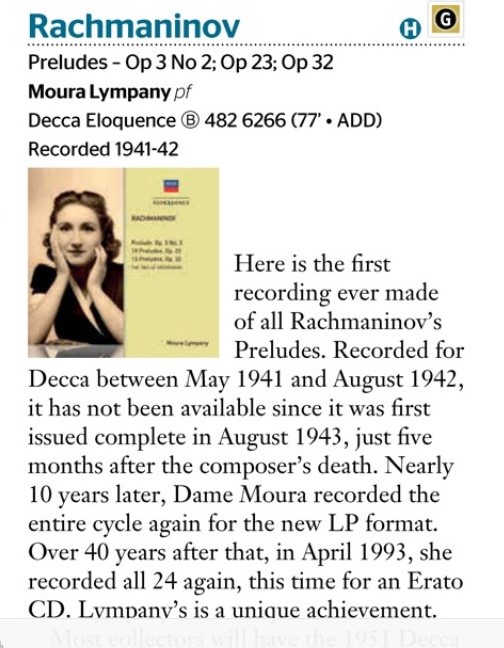
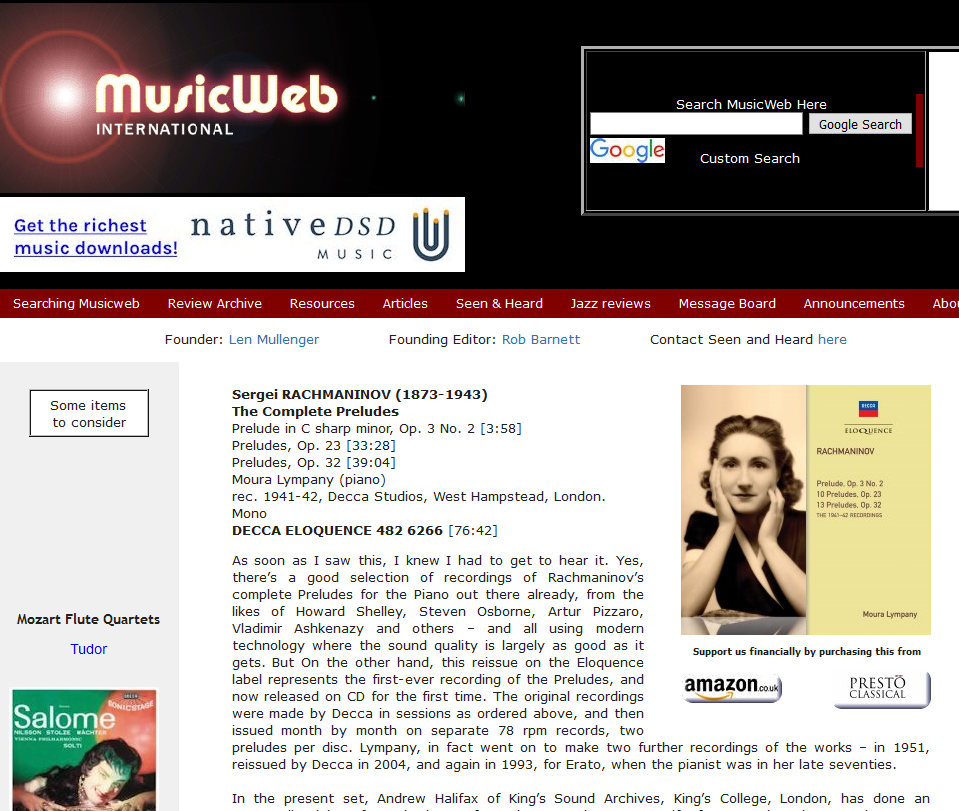

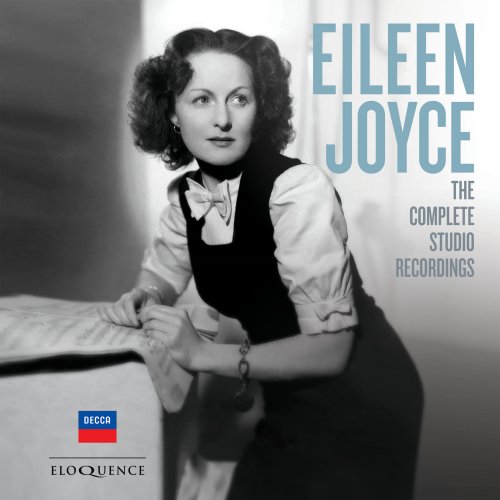
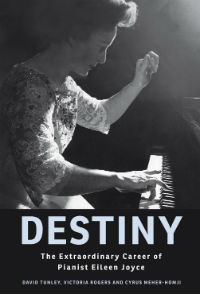
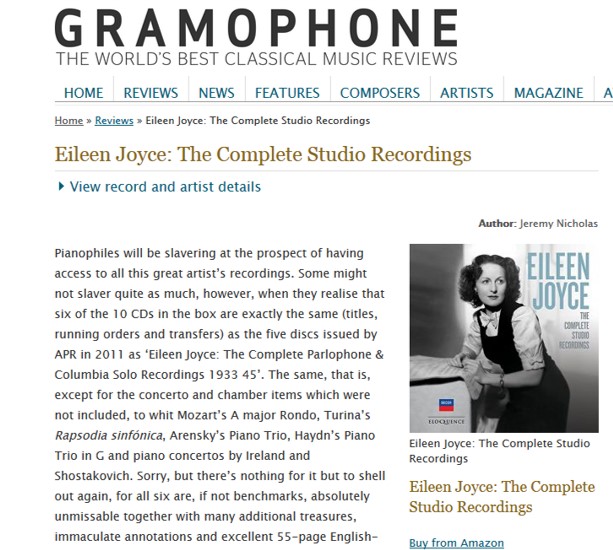
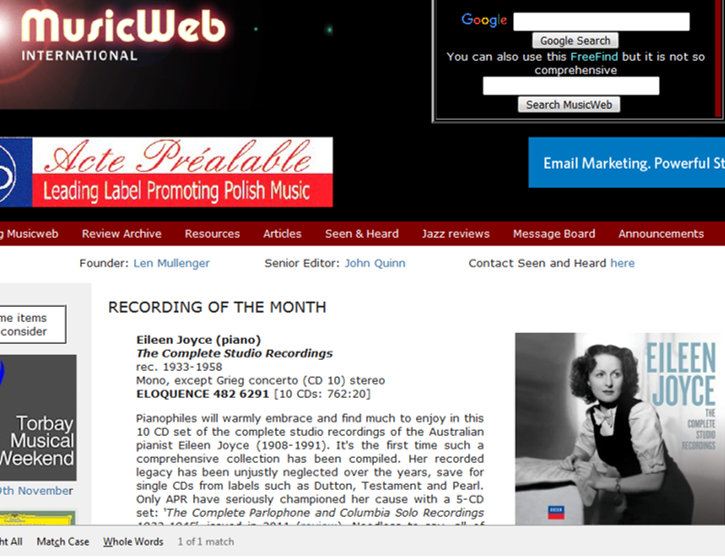
Also in March of 2018, MusicWeb International, the leading British classical CD site, deemed the Eileen Joyce set as "Recording of the Month," with critic Stephen Greenbank observing that "this superb collection will grace any historical piano recordings collection." He adds, "The Rachmaninov Prelude selection and Shostakovich Fantastic dances find the ideal interpreter in Joyce, who delivers idiomatic readings with plenty of personality. In the Arensky D minor Trio, Op. 32, the pianist joins forces with Henri Temianka on violin and Antoni Sala on cello. The players savour the soaring lyricism of the music, investing passion, power and energy when required. One of the finest versions I've heard." The full review can be read simply by clicking on the image at the right.
The accolades bestowed last December by Pianist magazine can be found here, and the briefer, though highly complimentary, review which appeared in January in the Classical Music Guide appears here. Jed Distler's authoritative praise may be found here at ClassicsToday.com, though a subscription is required to read the full text. However, few critics have exceeded Australia's David Barmby in the praise he conferred in the Melbourne-based Performing Arts Hub: "These recordings include many of the concertos with which Joyce is most closely associated including a most moving Rachmaninov Piano Concerto No 2, a joyous Tchaikovsky Piano Concerto No 2 (in his pupil Siloti’s edition), a superbly articulated, argued, brilliant and dazzling Piano Concerto by Grieg and notably outstanding performances of John Ireland’s engaging Piano Concerto and Shostakovich’s Piano Concerto No 1. However, Joyce’s Chopin is the outstanding material here, breathing a free spaciousness, delicacy and understatement. The Brahms 6 Klavierstücke, Op 118 are imaginative with a sensuous elasticity. There is a raft of occasional pieces conveyed with precision, wit and charm, particularly Grieg’s Lyric Pieces, Op 43." His full review can be read here.